Vinyl Floor Stains Around a Toilet
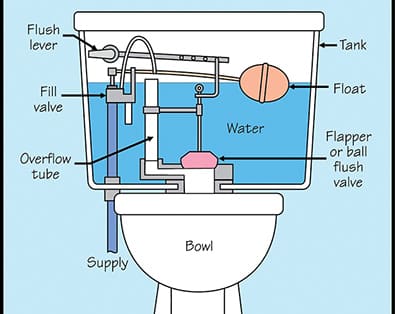
Vinyl floor stains around a toilet are always an issue for a home inspector to worry about, right? How should we examine and report these stains? Are they really a serious defect?
Stains in a vinyl floor
Gray-colored stains in vinyl flooring are often caused by moisture underneath the floor (Photo 1). This type of stain will always feel dry. The stain often looks like it’s on the surface, but rubbing the stain with a rag and detergent won’t remove what’s actually beneath the surface of the vinyl.
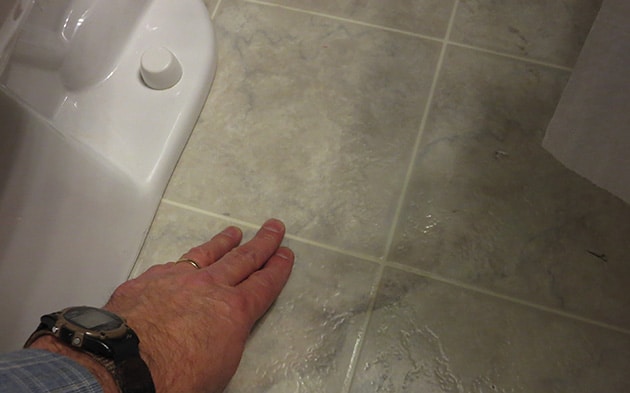
Stains Near a Toilet are Caused by a Leak…
The vinyl stains found around a toilet indicate a drain leak (Illustration). In a properly mounted toilet, a flange seals the unit to the drain pipe at floor level. This flange—a circular piece of PVC, rubber or metal—is usually secured in place with a few bolts. But if the toilet is not securely fastened to the floor and can tip from side to side, this causes the seal to fail. With each flush of the toilet, water leaks out.
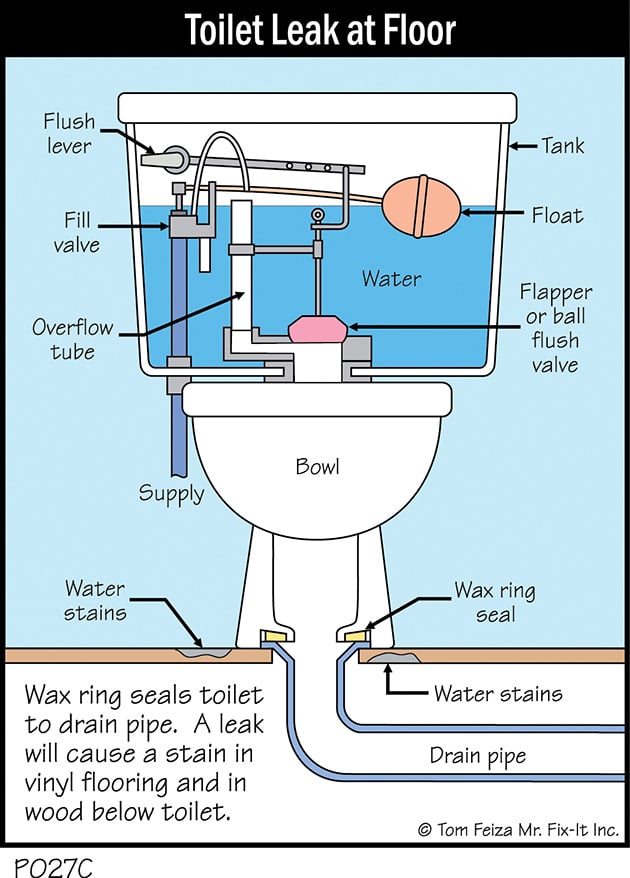
…But is it an Active Leak?
Using a moisture meter can help you determine whether the floor or the subfloor is wet (Photo 2). In this case, the stain tests dry, so maybe the toilet had moved and was re-set with a new wax ring and then secured to the flange.
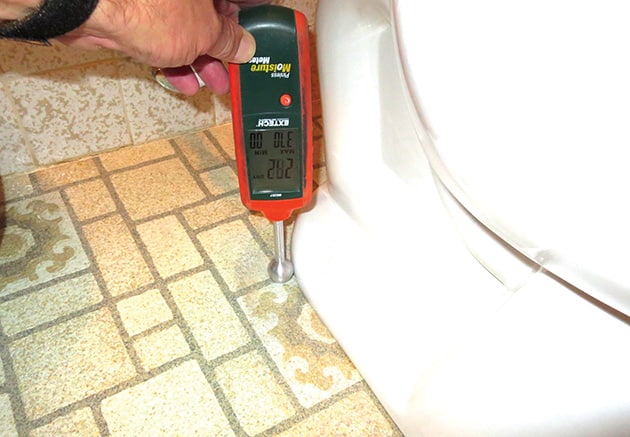
In another instance, the moisture meter indicates the floor is “at risk,” meaning it is wet (Photo 3). There’s an active leak here.
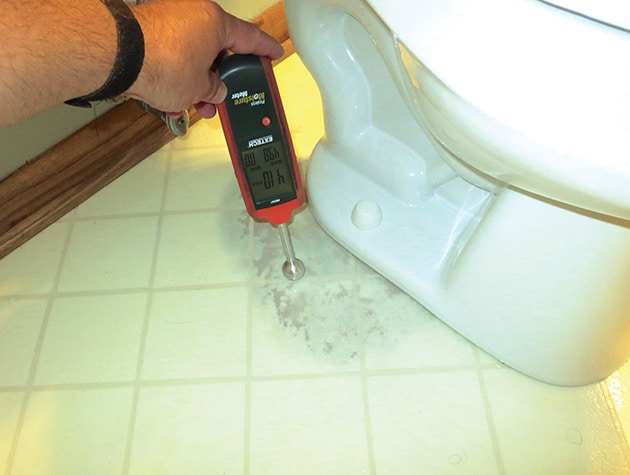
Looking at the subfloor below the toilet confirms that there is water damage (Photo 4). Keep in mind, though, that this damage is not always visible during your inspection.
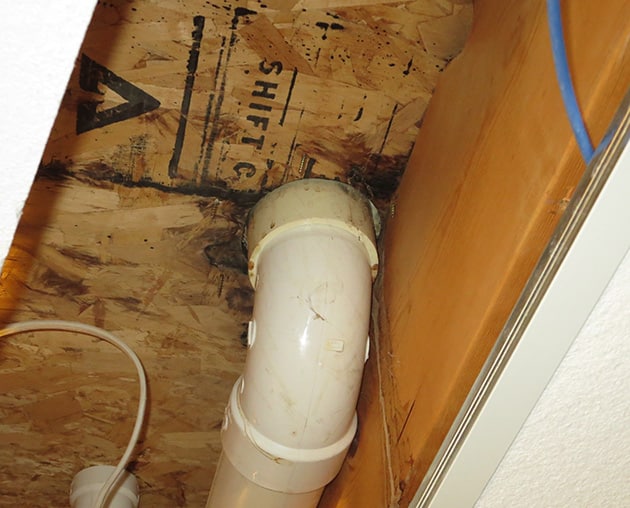
The Takeaway
You should report any visible signs of water damage to vinyl flooring around a toilet. A moisture meter might confirm that it is wet. Looking below the toilet, if possible, will help you confirm the leak issue.
This is a defect that needs further evaluation because replacing a vinyl floor and damaged areas of a subfloor is always an expensive project. You can’t just patch a vinyl floor. And a flooring contractor will tell the homeowner: “Your home inspector should have reported this.” Ouch!
To learn more, attend Tom’s technical presentations at educational sessions for ASHI chapters. Tom can also provide his knowledge for your educational event; contact him at Tom@HTOYH.com
To Read the Full Article
ASHI offers its members unparalleled resources to advance their careers. ASHI offers training for inspectors at all levels of knowledge and experience, including resources about all major home systems. Members benefit from a vast network of experienced professionals, providing a community for mentorship and knowledge sharing..
In this Issue

FIND A HOME
INSPECTOR
Professional Networking
Grow your professional network, find a mentor, network with the best, and best part of the community that’s making home inspection better every day.
